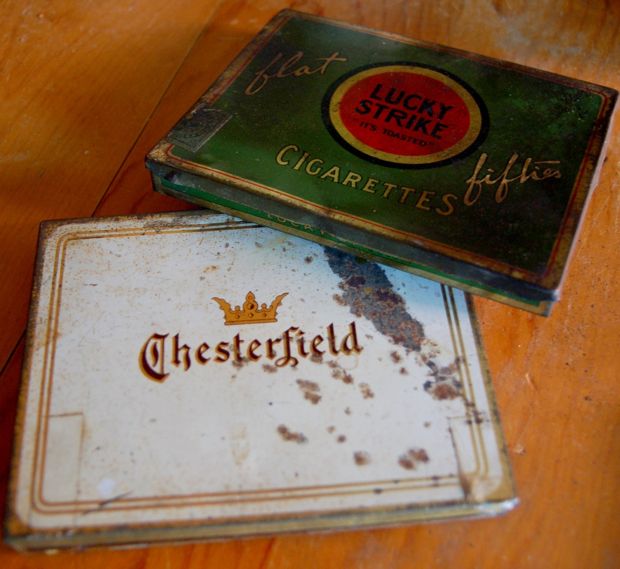
Michelle Enemark, of Curious Expeditions, has a cool new blog, filled with picture of curious old things. Check it out:
Michelle J. Enemark


Michelle Enemark, of Curious Expeditions, has a cool new blog, filled with picture of curious old things. Check it out:
Michelle J. Enemark
I really want one of these. Don't you?
It's always sad when an old pair of underpants wears out. Underpants are the most intimate of companions — they stick with us (and sometimes to us) through thick and thin. They can serve as pajamas, lounge-wear and as a form of sexual display capable of driving women wild. The brightly-colored cocktail glasses on the defunct underpants above, for example, send a clear message — “I'm fun . . . but sophisticated!”
I bought those underpants about seven years ago at the Old Navy store on 34th Street in Manhattan. They were very cheap. They had a good run and served me well in good times and in bad.
They will be missed.
I think I can say without fear of contradiction that this is the greatest 12-inch action figure the world has ever known.
I'm a person with too many T-shirts — way
too many T-shirts. Periodically I make vows not to buy any more
T-shirts, but sometimes you just can't help yourself. Two years
ago, on a visit to Memphis, Tennessee, I couldn't resist buying a
T-shirt from Graceland, from the Sun Records studio and from the Stax
studio.
Recently I broke down again. I bought two T-shirts featuring the
work of Fletcher Hanks, the worst comic book artist of all time, and
one featuring the work of Amy Crehore, a terrific painter (the design
is featured above.)
I really don't see how anyone could resist buying these T-shirts, so at the risk of enabling other people with T-shirt acquisition problems
I will add that the Tickler T can be had here and the Hanks Ts
here. May I also remind you that T-shirt should always be spelled
with a capital T, because only the capital T reflects the shape of the
shirt. A t-shirt would be some kind of turtleneck T.
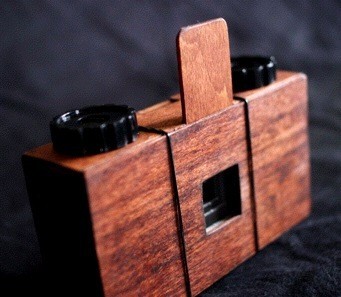
My friend Jae Song is selling a pinhole camera in a customized wooden casing online here. It's awesomely beautiful and cheap, considering that the casing is handmade.
Jae, a brilliant cinematographer and expert on digital photography, writes this about the pinhole camera:
The thing I love about the pinhole camera is that it slows me down.
Because of the long exposures, the camera needs to be placed down at a
stable place and left alone for awhile. In this world of instantaneous
gratification, it makes me wait. And while I wait, it makes me really
look and see. I also like the fact there is no viewfinder, no lens to
set focus nor aperture to adjust. It’s just me and time. I am forced to
use my instincts. It brings back the thrill of mystery and wonder and
surprise when the film comes back from the lab.
Jae also sells hand-made kites in hand-made wooden boxes and hand-drawn
cards with pressed flowers — you can see all of his hand-made stuff here.
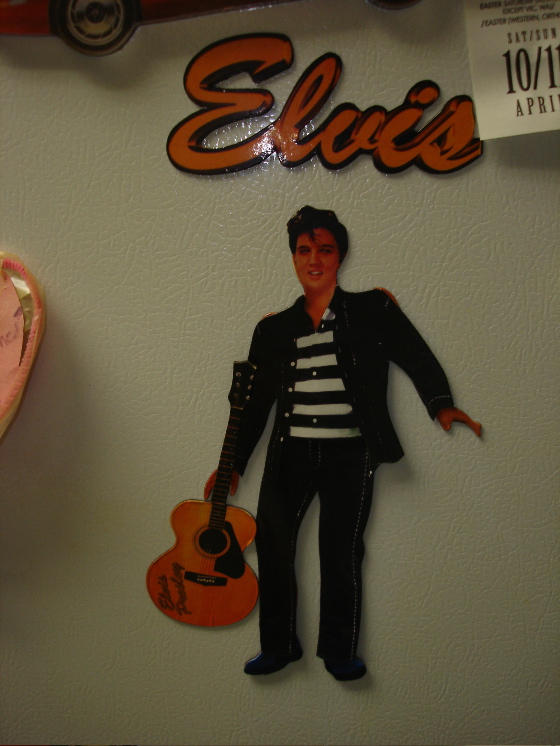
Oh, no — prison garb! He's in the jailhouse now!
Luckily he's got his axe — maybe he can rock himself out of stir . . .
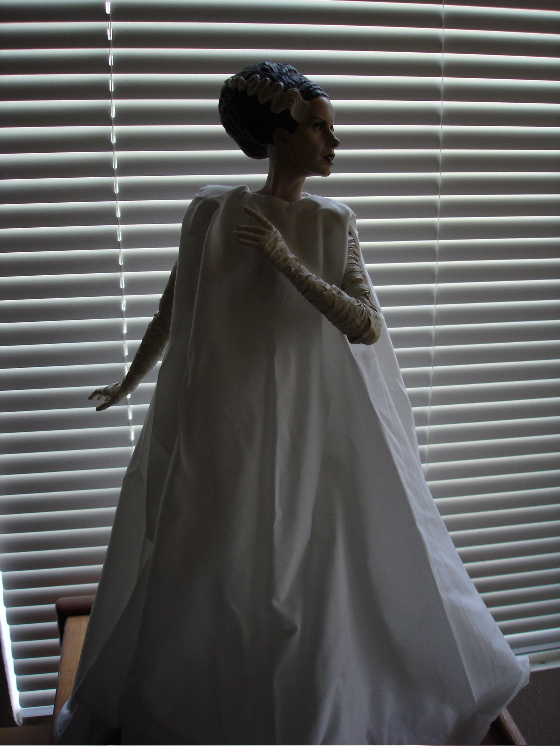
The amazing object above is an 18″ statuette of the Bride Of Frankenstein made by Sideshow Collectibles.
Sideshow
started out as a model and miniature shop for the film business, with a
sideline in design and sculpting for toy companies. Back in the late 90s, Sideshow
decided it could make better toys, and have more fun, if it got into manufacturing and
so started its own line of 8″ figures of characters from the classic Universal
horror films.
My sister,
shopping for toys for her kids one day, ran into the really
extraordinary 8″ figure they made based on the monster from The Son Of
Frankenstein. She thought I would like it and bought me
one. I loved it — thought it was head and shoulders above other
Universal figures I'd seen, with its first-rate sculpting and its
attention to details in the acccessories. It became one of my
prize possessions — one of my penates, my household gods.
A lot of other
people felt the same way — the 8″ line sold incredibly well and
inspired the company to get more ambitious. I'd checked out the
other 8″ Universal figures but only really liked the bride from The Bride Of Frankenstein. The first 12″ Sideshow figure I saw blew me away, though — Lon Chaney's Erik, from The Phantom Of the Opera,
in his Masque of the Red Death costume. (See it here.) It
remains one of the greatest 12″ action figures of all time.
Again, it was my sister who discovered it and bought it for me.
Tragically, I discovered that almost everything Sideshow produced in
the 12″ format was brilliant. I started collecting them
feverishly. They would sell out quickly in retail establishments
and on Sideshow's web site, so I had to track many down on eBay.
The success of the 12″ line, which came to include historical
figures as well as characters from TV shows, led Sideshow to up the
ante again with their 18″ line. These were not fully articulated
action figures. Sometimes they had slightly posable wire
armatures, sometimes they were cast fully in polystone. The best
of them — like the vampire from Murnau's Nosferatu — were real works of art.
They were so expensive that, sadly, I had to get more
selective. I couldn't resist the 18″ Bride, figure, though.
She's just amazing.
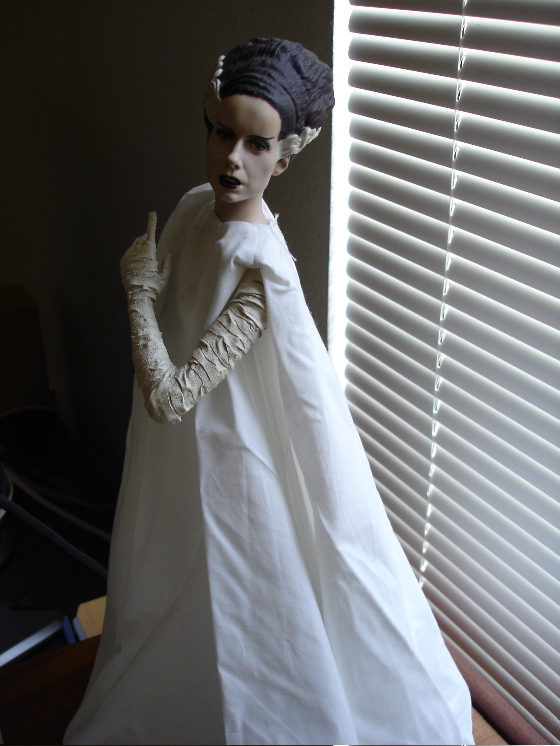
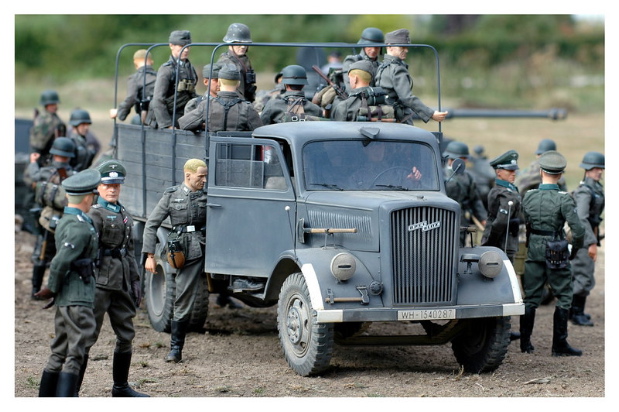
My nephew Harry just acquired his 100th 12″ action figure. I’ve got a shockingly large number of them myself. Some people, though, take their fascination with these toys to surreal lengths.
The photo above is just part of a huge diorama using customized 12″ figures and fabricated in-scale props. It takes me back to the days of my youth when I used to disappear into the minature worlds of toy-figure playsets, like the Fort Apache set I got when I was five or six:
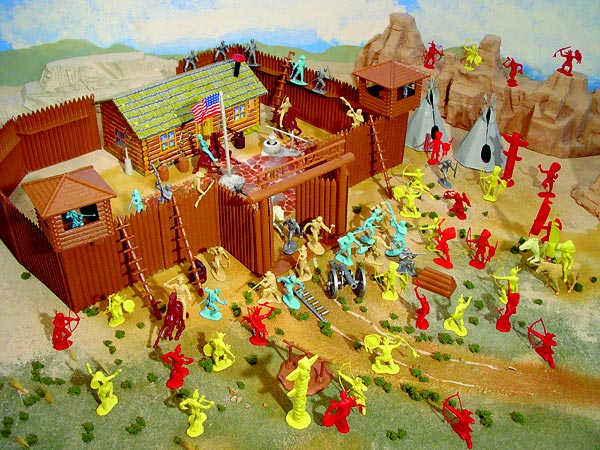
Wanting to possess whole little worlds like this and enter into them imaginatively is closely connected to wanting to make movies, which accounts for the fascination of 12″ figures taken from characters in movies — transported back, as it were, into the miniature realm where they had their imaginative birth.
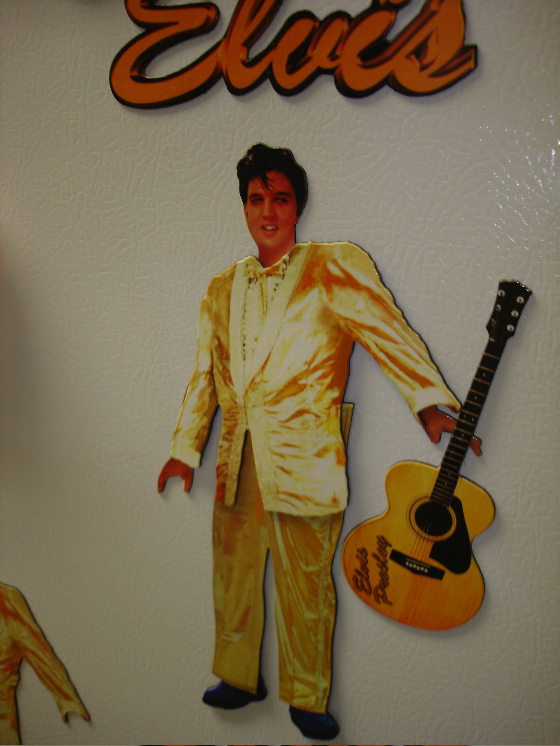
Oh, look — it's the famous gold suit by Nudie Of Hollywood, commisioned for Elvis by Colonel Parker. Elvis thought it was
a bit too much for stage appearances but often wore just the coat with black pants. Cat clothes!
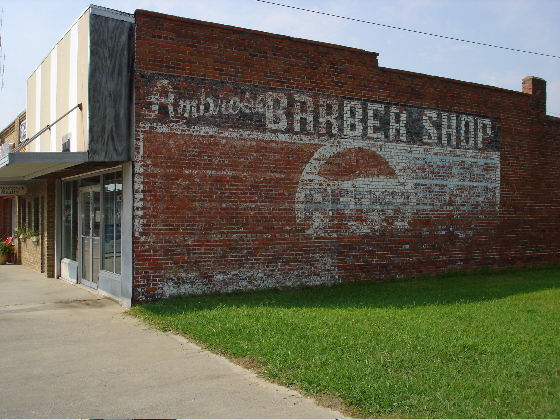
It's
startling to me to realize how many Christmas presents from childhood I
still remember. I'm speaking of the big ones, that Santa brought, that
were waiting unwrapped under the tree on Christmas morning. They are
memorable for many reasons, connected partly to the supernatural nature
of their appearance but also partly to the fact that they were the most
desirable objects one could imagine at any given age. They would have
been amazing no matter how they got under that tree.
When I
was six and seven I lived in a tiny town in North Carolina called Belhaven, the center
of an agricultural region. The feed store was the biggest establishment
in town, but there was also a small movie theater and a barbershop,
which doubled as a variety store, offering miscellaneous goods like
candy and toys.
That's a picture of the building it was in, above, now a beauty
parlor. I photographed it on a visit I made to Belhaven last
summer.
In the
Fall of 1956 or 1957, when I was either six or seven, I was walking
home from school one day when I saw something astonishing in the front
window of the barbershop. It was a Roy Rogers Fix-It Chuck Wagon set,
by Ideal. I had never seen anything quite like it, in the intricacy of
its parts and accessories. I was already obsessed with toy soldiers,
and sometimes these came with forts and artillery pieces, but the Roy
Rogers Chuck Wagon was executed on a bigger scale than most toy soldier
sets and was more rigorously focussed. Here was a chuck wagon with
utensils and a trunk to store them in, horses with driving reins and a
whip . . . and here were Roy and Dale and Pat Brady and Bullet, Roy's
dog, and Pat's Jeep Nellybelle — all familiar from Roy's show on
television.
I really couldn't believe my eyes. I felt as though someone had entered my psyche and created the toy I'd most like to
play with — if only I could have imagined it in advance.
I
ran home and told my parents that I had beheld the present I would ask
Santa for at Christmas. I think I had some subconscious notion that
Santa might have to act quickly to secure this treasure before it was
bought out from under him from the barbershop/variety store. I'm not
sure I understood that the chuck wagon set was not a unique example of
the toy.
Of course it duly appeared under the tree that year and I can still remember carrying it into the dining room to unpack
it from its box and marvel at its various parts. It was pure magic.
The
set lost its component pieces over the years, until finally none of
them remained. I still have a few toys from that era but the chuck
wagon got played to pieces. The aura of it, though, has never left my
consciousness, and a few years ago I began to wonder if I might find
another set to replace it — as a kind of link to my first and second
grade self. Those were the years when movies became consciously
important to me as magical creations and central to my imaginative
life, and I always go back to them when I need inspiration.
A couple of years ago I found a Roy Rogers Chuck Wagon set in good condition on eBay and
bid for it and won it, and a few days later it arrived at my home here in
Las Vegas. When I unpacked it and set it up on my dining room table I
didn't feel especially excited or particularly sentimental or even
remotely nostalgic for times gone by. Those years in the middle Fifties
have not gone by — have not slipped into the past. I took up my
imaginative conversation with the Roy Rogers Chuck Wagon set as one
takes up a conversation with an old friend one hasn't seen in many years
— as though no time at all has intervened.
This tiny little plastic wagon is one of the vehicles that got me from there to here and it takes me back there any time
I ask it to. Its horses can pull the weight of dreams.
Some toys just are. Above is the Sideshow 12-inch action figure of Lon Chaney in his Masque Of the Red Death costume from The Phantom Of the Opera. I still can’t quite believe that somebody made this extraordinary thing, and that I own one.
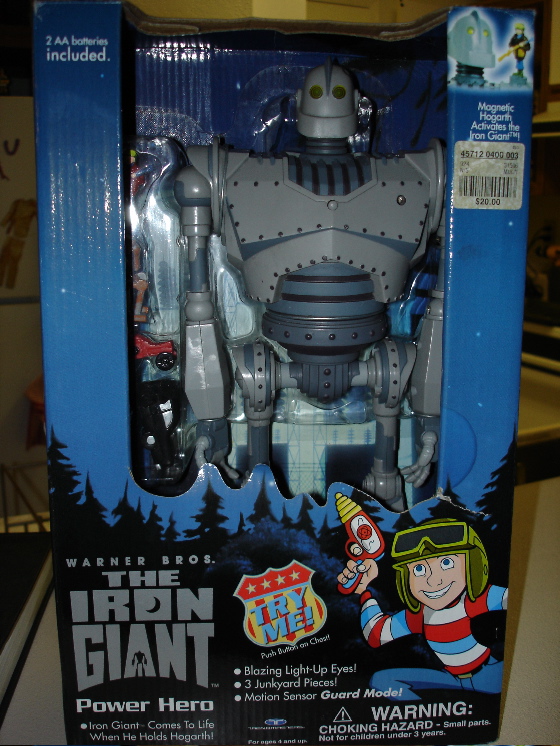
A merchandising artifact from the film The Iron Giant, released in 1999, this wondrous toy is almost impossible to find today. I tracked one down on eBay — it was kind of pricey in this pristine boxed condition.
The figure of the giant is about 10″ tall. If you push a button on its chest it speaks a few phrases from the film and its eyes light up. It would be awesome if the giant’s jaw were moveable — otherwise it’s just about perfectly cool.
In William Gibson’s latest novel Pattern Recognition, the heroine Cayce Pollard, a coolhunter, wears a reproduction MA-1 flight jacket, 1957 pattern, made by Buzz Rickson’s, which Gibson describes as a super authentic recreation of the original — in a sense more authentic than the original because of the fanatical devotion to detail by the manufacturer. He notes that the uneven seams of the original, the result of sewing the new fabric nylon on machines made to stitch cotton, have been lovingly copied, even exaggerated slightly, to make the homage that much clearer.
It turns out that Buzz Rickson’s is a real company, based in Japan, and that it really does make such reproductions, with all the obsessiveness Gibson so admires.
But Gibson made a mistake. He described Pollard’s jacket as black, whereas Rickson’s only produced the jacket in green, since that’s the only way the Air Force ever issued it. When Rickson’s learned about the mistake, it decided to issue a “Pattern Recognition” edition of the jacket in black. Gibson’s fantasy jacket has thus become real.
Two years ago I posted about the jacket on the discussion forum at Gibson’s official web site. A year after that Gibson noticed my old post and responded to it on his blog. I just discovered his response a couple of days ago — you can read it here:
http://www.williamgibsonbooks.com/blog/2005_12_01_archive.asp
This still leaves us with a problem. Do we want to wear Cayce Pollard’s black
Rickson’s MA-1, which is, in fact, unutterably cool-looking, or do we want to wear the original Rickson’s reproduction, which is what inspired Gibson, and Cayce, in the first place?
In the end, I opted for the black model, because of its unutterable coolness and as a tribute to Gibson’s great book.
But it’s a complicated question that each man or woman must decide for his or her self.
Here’s a link to the American distributor of Buzz
Rickson’s jackets — all of which are quite amazing and quite expensive: